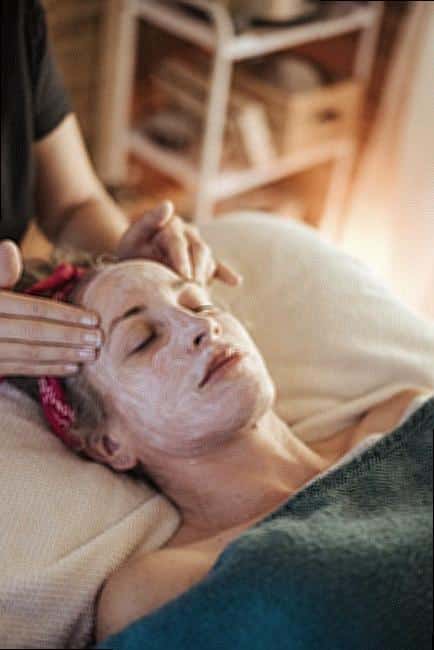Eye drops for red eyes are commonly used to relieve the symptoms of redness, itching, and irritation that can be caused by allergies, infections, or simply fatigue from extended periods of computer use or reading. These over-the-counter (OTC) or prescription medications work by reducing inflammation and constricting blood vessels in the eye, which can help to reduce the redness and discomfort associated with various eye conditions.
One of the most common causes of red eyes is conjunctivitis or “pink eye,” which can be caused by viral or bacterial infections, or by allergies. Symptoms of conjunctivitis include redness, itching, swelling, and discharge from the eye. Over-the-counter eye drops for red eyes can be effective in reducing the inflammation and other symptoms associated with conjunctivitis. In more severe cases, prescription eye drops may be necessary to provide relief.
Another common cause of red eyes is dry eye syndrome, which can be caused by a number of factors, including aging, hormonal changes, medications, and certain medical conditions. Dry eye syndrome is characterized by a lack of adequate tear production, which can result in redness, itching, and irritation. Eye drops specifically formulated to address dry eye can help to alleviate these symptoms and provide temporary relief.
Overall, eye drops for red eyes can be a simple and effective way to manage common eye conditions and provide relief from associated symptoms. However, it is important to follow the instructions on the package or as directed by your healthcare provider, and to seek medical attention if symptoms persist or worsen.
What Are The Best Eye Drops For Red Eyes?
When it comes to treating red eyes, there are various kinds of eye drops available in the market. Choosing the right one can often be a daunting task, especially when you do not know much about the different types of eye drops for red eyes.
Some of the best eye drops available for red eyes are:
1. Visine Original Redness Reliever: This type of eye drop is one of the most popular and effective for treating redness in the eyes. It works by constricting the blood vessels in your eyes, which reduces the redness.
2. Clear Eyes Maximum Redness Relief: This is another effective solution to tackle redness in the eyes. It works by removing any irritants that may be causing your eyes to become red.

3. Rohto Cool Eye Drops: These eye drops are meant to provide a cooling and refreshing sensation to your eyes. They work by creating a hydrating environment in the eyes, which reduces redness.
4. Lumify Redness Reliever Eye Drops: This type of eye drop is relatively new to the market but has gained popularity in recent times. It works by selectively targeting the small blood vessels in the eyes, reducing redness and making your eyes look brighter.
How Do Eye Drops For Red Eyes Work?
Eye drops for red eyes work by either constricting the blood vessels in your eyes or removing irritants that may be causing your eyes to become red. For instance, Visine Original Redness Reliever works by constricting the blood vessels in your eyes, which makes the redness disappear.
Clear Eyes Maximum Redness Relief works differently. It contains a lubricant that moisturizes and soothes the eyes, which in turn helps remove any irritants causing the redness.
Rohto Cool Eye Drops, on the other hand, work by creating a fresh and hydrating environment in your eyes. As a result, your eyes feel cool and refreshed, and the redness fades away.
Lumify Redness Reliever Eye Drops are different from other types of eye drops. They work by selectively targeting the small blood vessels in the eyes, reducing redness, and making your eyes look brighter.
Can I Use Eye Drops For Red Eyes Every Day?
It is generally safe to use eye drops for red eyes every day. However, it is important to note that they should not be used without first consulting a doctor or an eye specialist.
If you use eye drops frequently, your eyes may become dependent on them, which can cause them to become even redder. Moreover, prolonged use of eye drops can cause dryness and irritation in the eyes.
Therefore, it is advisable to use eye drops for red eyes only under the advice of a doctor, and to use them in moderation.
What Causes Red Eyes And How Can Eye Drops Help?
Red eyes can be caused by various factors, including:
1. Allergies: Allergies, especially seasonal allergies, can cause redness in the eyes.
2. Dryness: When the eyes do not produce enough tears, they can become dry and red.
3. Infection: Eye infections, such as conjunctivitis, can lead to redness.
4. Irritants: Exposure to irritants, such as smoke, dust, or wind, can cause red eyes.
Eye drops can help reduce redness by constricting blood vessels, removing irritants or allergens, and providing lubrication to the eyes.
What Are The Side Effects Of Eye Drops For Red Eyes?
While eye drops for red eyes are generally safe, they may cause some side effects, including:
1. Blurred vision
2. Dry eyes
3. Irritation or burning sensation in the eyes
4. Redness or swollen eyelids
5. Increased sensitivity to light

6. Headaches
If you experience any of these side effects after using eye drops for red eyes, it is recommended to stop using them immediately and consult a doctor.
How Long Do Eye Drops For Red Eyes Take To Work?
The time it takes for eye drops for red eyes to work varies according to the type of eye drops and the cause of redness.
In general, eye drops that work by constricting blood vessels can produce results in a matter of minutes. However, they may not be as effective in treating redness caused by allergies or irritation.
Eye drops that provide lubrication to the eyes or remove irritants may take longer to work. In such cases, it may take a few hours or days to see the desired results.
Are There Any Natural Remedies For Red Eyes That Work?
There are several natural remedies that can be used to treat red eyes, including:

1. Cold compress: Applying a cold compress to the eyes can help reduce redness and inflammation.
2. Cucumber slices: Placing cucumber slices over the eyes can provide a soothing effect and reduce redness.
3. Green tea bags: The anti-inflammatory properties of green tea can help reduce redness in the eyes. Simply place a chilled, damp green tea bag over each eye for 15 to 20 minutes.
4. Rosewater: Rosewater has a cooling effect on the eyes, which can help reduce redness. Dip a cotton ball in rosewater and place it over the eyes for a few minutes.
What Ingredients Should I Look For In Eye Drops For Red Eyes?
When choosing eye drops for red eyes, it is important to look for the following ingredients:
1. Naphazoline: Naphazoline is a vasoconstrictor that helps constrict blood vessels in the eyes, reducing redness.
2. Tetrahydrozoline: Tetrahydrozoline is another vasoconstrictor that is effective in reducing redness.
3. Lubricants: Eye drops that contain lubricants, such as glycerin or polyethylene glycol, can help soothe and moisturize the eyes, reducing redness.
4. Antihistamines: Antihistamines can help relieve redness caused by allergies. They work by blocking histamine, which is responsible for causing redness and inflammation.
Can Eye Drops For Red Eyes Be Used With Contact Lenses?
Eye drops for red eyes can be used with contact lenses, but it is important to follow the instructions carefully. Some eye drops may cause irritation or discomfort when used with contact lenses.
If you wear contact lenses, you should choose eye drops that are labeled “contact lens safe” or “for use with contact lenses.”
In general, it is recommended to remove your contact lenses before using any eye drops. You should wait at least 10 to 15 minutes before putting your contact lenses back in.
Can Eye Drops For Red Eyes Be Used For Allergies?
Eye drops for red eyes can be used to treat redness caused by allergies. However, it is important to choose eye drops that are specifically formulated for allergies.
Antihistamines, which are commonly found in eye drops for red eyes, can help relieve redness caused by allergies. They work by blocking histamine, which is responsible for causing redness and inflammation.
In summary, when it comes to choosing the right eye drops for red eyes, it is important to consider the cause of redness, the type of eye drops that work best for you, and any possible side effects. If you have any questions or concerns about using eye drops for red eyes, it is best to consult a doctor or an eye specialist.
Conclusion
In conclusion, eye drops for red eyes can be a useful tool for relieving eye irritation and redness. These eye drops work by constricting the blood vessels in the eye, reducing inflammation and providing relief. However, it is important to use eye drops as directed and consult with a healthcare professional if you experience persistent redness, discomfort or vision changes.
It is also important to note that not all eye drops are created equal. Some eye drops may contain ingredients that can cause allergies or irritation, so it is essential to read the label and consult with a healthcare professional before using them.
Additionally, it is essential to practice proper eye hygiene to prevent eye redness and irritation. This includes regular hand washing, avoiding rubbing your eyes, and taking regular breaks from computers and other electronic devices.
In summary, eye drops for red eyes can be an effective tool for reducing eye redness and discomfort. However, it is crucial to use them responsibly and in conjunction with proper eye hygiene practices. If you experience persistent redness or discomfort, you should consult with a healthcare professional for further evaluation and treatment.
Some of the best eye drops available for red eyes are:
1. Visine Original Redness Reliever: This type of eye drop is one of the most popular and effective for treating redness in the eyes. It works by constricting the blood vessels in your eyes, which reduces the redness.
2. Clear Eyes Maximum Redness Relief: This is another effective solution to tackle redness in the eyes. It works by removing any irritants that may be causing your eyes to become red.
3. Rohto Cool Eye Drops: These eye drops are meant to provide a cooling and refreshing sensation to your eyes. They work by creating a hydrating environment in the eyes, which reduces redness.
4. Lumify Redness Reliever Eye Drops: This type of eye drop is relatively new to the market but has gained popularity in recent times. It works by selectively targeting the small blood vessels in the eyes, reducing redness and making your eyes look brighter.
"}},{"@type": "Question", "name": "How Do Eye Drops For Red Eyes Work?","acceptedAnswer": {"@type": "Answer","text": "Eye drops for red eyes work by either constricting the blood vessels in your eyes or removing irritants that may be causing your eyes to become red. For instance, Visine Original Redness Reliever works by constricting the blood vessels in your eyes, which makes the redness disappear.
Clear Eyes Maximum Redness Relief works differently. It contains a lubricant that moisturizes and soothes the eyes, which in turn helps remove any irritants causing the redness.
Rohto Cool Eye Drops, on the other hand, work by creating a fresh and hydrating environment in your eyes. As a result, your eyes feel cool and refreshed, and the redness fades away.
Lumify Redness Reliever Eye Drops are different from other types of eye drops. They work by selectively targeting the small blood vessels in the eyes, reducing redness, and making your eyes look brighter.
"}},{"@type": "Question", "name": "Can I Use Eye Drops For Red Eyes Every Day?","acceptedAnswer": {"@type": "Answer","text": "It is generally safe to use eye drops for red eyes every day. However, it is important to note that they should not be used without first consulting a doctor or an eye specialist.
If you use eye drops frequently, your eyes may become dependent on them, which can cause them to become even redder. Moreover, prolonged use of eye drops can cause dryness and irritation in the eyes.
Therefore, it is advisable to use eye drops for red eyes only under the advice of a doctor, and to use them in moderation.
"}},{"@type": "Question", "name": "What Causes Red Eyes And How Can Eye Drops Help?","acceptedAnswer": {"@type": "Answer","text": "Red eyes can be caused by various factors, including:
1. Allergies: Allergies, especially seasonal allergies, can cause redness in the eyes.
2. Dryness: When the eyes do not produce enough tears, they can become dry and red.
3. Infection: Eye infections, such as conjunctivitis, can lead to redness.
4. Irritants: Exposure to irritants, such as smoke, dust, or wind, can cause red eyes.
Eye drops can help reduce redness by constricting blood vessels, removing irritants or allergens, and providing lubrication to the eyes.
"}},{"@type": "Question", "name": "What Are The Side Effects Of Eye Drops For Red Eyes?","acceptedAnswer": {"@type": "Answer","text": "While eye drops for red eyes are generally safe, they may cause some side effects, including:
1. Blurred vision
2. Dry eyes
3. Irritation or burning sensation in the eyes
4. Redness or swollen eyelids
5. Increased sensitivity to light
6. Headaches
If you experience any of these side effects after using eye drops for red eyes, it is recommended to stop using them immediately and consult a doctor.
"}},{"@type": "Question", "name": "How Long Do Eye Drops For Red Eyes Take To Work?","acceptedAnswer": {"@type": "Answer","text": "The time it takes for eye drops for red eyes to work varies according to the type of eye drops and the cause of redness.
In general, eye drops that work by constricting blood vessels can produce results in a matter of minutes. However, they may not be as effective in treating redness caused by allergies or irritation.
Eye drops that provide lubrication to the eyes or remove irritants may take longer to work. In such cases, it may take a few hours or days to see the desired results.
"}},{"@type": "Question", "name": "Are There Any Natural Remedies For Red Eyes That Work?","acceptedAnswer": {"@type": "Answer","text": "There are several natural remedies that can be used to treat red eyes, including:
1. Cold compress: Applying a cold compress to the eyes can help reduce redness and inflammation.
2. Cucumber slices: Placing cucumber slices over the eyes can provide a soothing effect and reduce redness.
3. Green tea bags: The anti-inflammatory properties of green tea can help reduce redness in the eyes. Simply place a chilled, damp green tea bag over each eye for 15 to 20 minutes.
4. Rosewater: Rosewater has a cooling effect on the eyes, which can help reduce redness. Dip a cotton ball in rosewater and place it over the eyes for a few minutes.
"}},{"@type": "Question", "name": "What Ingredients Should I Look For In Eye Drops For Red Eyes?","acceptedAnswer": {"@type": "Answer","text": "When choosing eye drops for red eyes, it is important to look for the following ingredients:
1. Naphazoline: Naphazoline is a vasoconstrictor that helps constrict blood vessels in the eyes, reducing redness.
2. Tetrahydrozoline: Tetrahydrozoline is another vasoconstrictor that is effective in reducing redness.
3. Lubricants: Eye drops that contain lubricants, such as glycerin or polyethylene glycol, can help soothe and moisturize the eyes, reducing redness.
4. Antihistamines: Antihistamines can help relieve redness caused by allergies. They work by blocking histamine, which is responsible for causing redness and inflammation.
"}},{"@type": "Question", "name": "Can Eye Drops For Red Eyes Be Used With Contact Lenses?","acceptedAnswer": {"@type": "Answer","text": "Eye drops for red eyes can be used with contact lenses, but it is important to follow the instructions carefully. Some eye drops may cause irritation or discomfort when used with contact lenses.
If you wear contact lenses, you should choose eye drops that are labeled "contact lens safe" or "for use with contact lenses."
In general, it is recommended to remove your contact lenses before using any eye drops. You should wait at least 10 to 15 minutes before putting your contact lenses back in.
"}},{"@type": "Question", "name": "Can Eye Drops For Red Eyes Be Used For Allergies?","acceptedAnswer": {"@type": "Answer","text": "Eye drops for red eyes can be used to treat redness caused by allergies. However, it is important to choose eye drops that are specifically formulated for allergies.
Antihistamines, which are commonly found in eye drops for red eyes, can help relieve redness caused by allergies. They work by blocking histamine, which is responsible for causing redness and inflammation.
In summary, when it comes to choosing the right eye drops for red eyes, it is important to consider the cause of redness, the type of eye drops that work best for you, and any possible side effects. If you have any questions or concerns about using eye drops for red eyes, it is best to consult a doctor or an eye specialist.
"}},{"@type": "Question", "name": "Conclusion","acceptedAnswer": {"@type": "Answer","text": "In conclusion, eye drops for red eyes can be a useful tool for relieving eye irritation and redness. These eye drops work by constricting the blood vessels in the eye, reducing inflammation and providing relief. However, it is important to use eye drops as directed and consult with a healthcare professional if you experience persistent redness, discomfort or vision changes.
It is also important to note that not all eye drops are created equal. Some eye drops may contain ingredients that can cause allergies or irritation, so it is essential to read the label and consult with a healthcare professional before using them.
Additionally, it is essential to practice proper eye hygiene to prevent eye redness and irritation. This includes regular hand washing, avoiding rubbing your eyes, and taking regular breaks from computers and other electronic devices.
In summary, eye drops for red eyes can be an effective tool for reducing eye redness and discomfort. However, it is crucial to use them responsibly and in conjunction with proper eye hygiene practices. If you experience persistent redness or discomfort, you should consult with a healthcare professional for further evaluation and treatment. "}}]}



